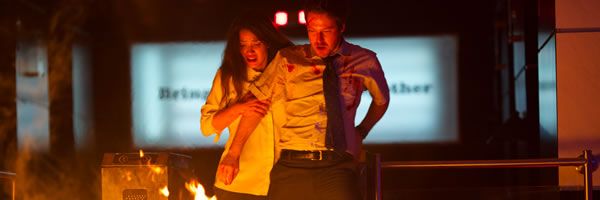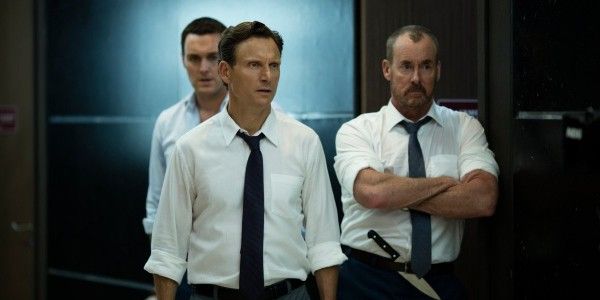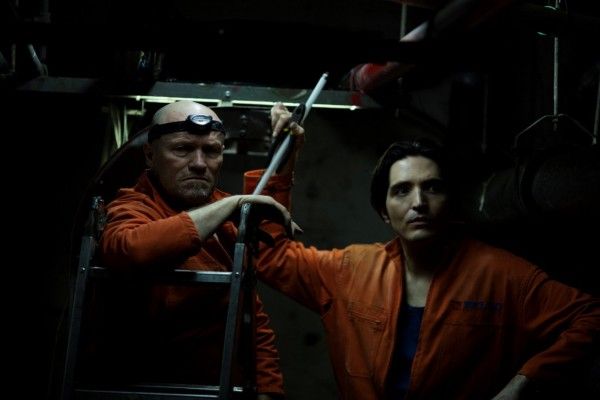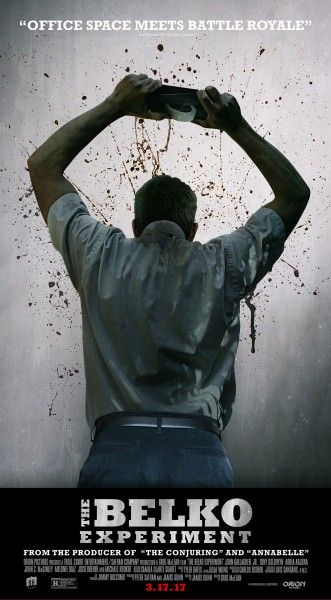[This is a re-post of my review from the 2016 Toronto International Film Festival. The Belko Experiment opens Friday.]
The best and only good thing I can say about Greg McLean’s The Belko Experiment is that it provides a greater appreciation for Kinji Fukasaku’s Battle Royale. Both films deal with innocent people being forced to kill their peers or be killed themselves, but whereas Battle Royale works valiantly to make sure you care about its ensemble cast and provides just enough of a sci-fi barrier to make the violence bearable, The Belko Experiment is a nonstop parade of ugliness masquerading as insight. Working from a script by James Gunn, McLean wants a film that can both horrify and titillate his audience, but all he can do is churn our stomachs with nihilistic violence.
The employees at Belko Industries in Bogota, Columbia are about to be subject to an experiment. A voice over the loudspeaker informs them that they must kill their fellow employees or face the consequences. The consequences are tiny explosives in the back of their heads that were placed there under the pretense of being tracking devices to protect employees from kidnapping. At first, the employees wonder if this is a sick prank, but once people’s heads start exploding, they realize they’ve been stuck in a utilitarian nightmare where 30 people must die or the experimenters will kill 60 at random.
The script wants to coast on this proposition and asking the audience what they would do in this situation. However, you can answer that question without seeing The Belko Experiment, and you certainly don’t have to watch people play it out for ninety minutes to glean any new insight. The majority of The Belko Experiment is watching innocent people beg for their lives before being slaughtered. It’s dark, ugly, twisted, and that may be Gunn and McLean’s view of humanity—that when pushed into a corner, we’ll act in our own self-interest. But rather than try to skillfully demonstrate that point, the film uses a sledgehammer and it makes for an unrelentingly despicable experience.
Belko isn’t the first film to use this setup, but it makes you appreciate how other stories did it better. Imagine if Battle Royale or The Hunger Games had been set in a school rather than a forest. They would be lambasted as cruel and exploitative of school shootings, and the creators realized that would be too much and also unnecessary. The stakes are horrifying enough without providing a real-world reminder. We live in a world where people have been gunned down at their offices, but Belko seems crassly indifferent to that reality.
If the movie were trying to make a point about the ubiquity of violence or even trying to satirize office culture, it could provide a framework to make the violence palatable. But Belko wants to hammer home the gravity of these deaths while also letting the audience revel in the bloodshed. There will be scenes where people are weeping before they’re shot in the head, and then there’s a scene where people are hacked to death in a bathroom and as the killer leaves the camera lingers on a “Please wash your hands,” sign. Get it? The killer just created a bloody mess but he didn’t wash his hands. Hilarious.
I didn’t have fun watching The Belko Experiment and it didn’t make me think about anything either other than how much more of the film I had to endure before it was over. It’s a movie that operates at a level where a woman offers sexual favors to another employee in the hopes he won’t kill her before he snaps her neck. It’s a constantly grotesque, sickening picture that will make you want to take a shower afterwards.
Rating: F




